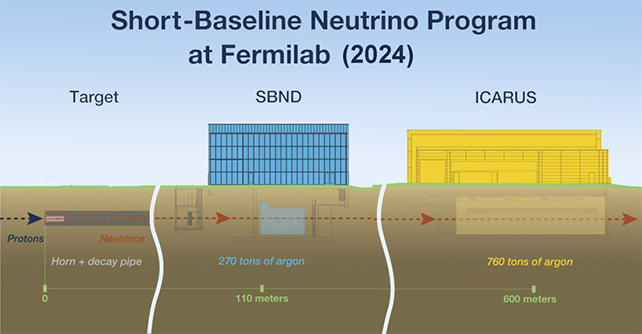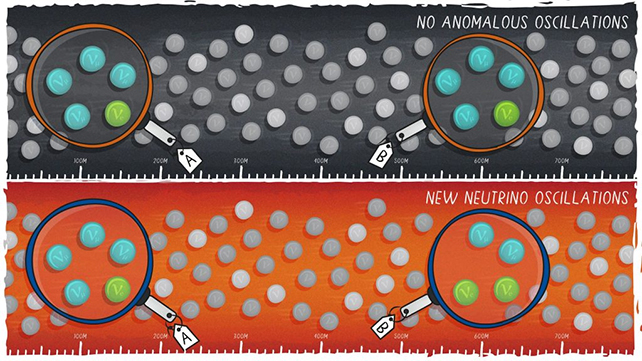Scientists have taken a big step in finding the kind of particles that are like ghosts, and new physics may exist.
For the first time, neutrinos have been detected by the Short-Baseline Near Detector (SBND) at the Fermi National Accelerator Laboratory (Fermilab).
It’s a significant moment in decades of eagerness to add to what we know about some of the most abundant particles in the Universe.
With such a small number and only a small chance of interacting with other particles, 100 trillion of them pass through our bodies every second without us knowing. Despite their unique properties, their existence may help explain why we have the Universe of atoms, molecules, stars, and galaxies.
We know three types of neutrinos – muon, electron, and tau – but some experiments show that there is another one waiting to be found, a type called ‘sterile’ which is even more ghostly than the others. Ensuring its existence is one of the main tasks of the newly created SBND.
“We think that neutrinos can help us to get some big questions, such as to find the concept of nature as a whole on small scales, or even why the universe is full of things that we exist at all,” said the scientist says researcher Andrew Mastbaum, of Rutgers University. of Arts and Sciences in New Jersey.

Work on the SBND has been going on for almost ten years, hence the first appearance neutrino The reaction has been a long time coming. It is filled with 112 tons of argon-cooled liquid that can detect the long-lasting neutrino interaction through the weak nuclear force.
Other observatories around the world, such as Antarctica’s IceCube Neutrino Observatory, are trying to catch the rare neutrinos coming down from space reactions. Experiments here on Earth also remove neutrinos from our more controlled systems, making it worthwhile to detect them as well.
SBND will join the ICARUS (Imaging Cosmic And Rare Underground Signals) machine, installed in 2017 at a distance of 500 meters (or a third of a mile). Together, they will explore the light source of the Fermilab instrument.

As many as 7,000 neutrino interactions can be detected each day – a large number considering how rare these interactions are. The two researchers could look for reflections from the collision, and perhaps, see something like a new change in neutrinos.
“Detecting the photons produced helps us to determine the time and duration of the interaction,” says physicist Richard Van de Water, from Los Alamos National Laboratory in New Mexico.
“The information supports the tracking of the molecules produced in these interactions, giving us a detailed picture of what the physics is doing.”
Since SBND can study neutrinos more precisely than before, it is expected that it can detect other patterns and anomalies that fall outside the Standard Model of physics, including possible darkness. Don’t be surprised to hear more from Fermilab, SBND and ICARUS in the coming years, as the project expands.
“Understanding the anomalies observed by previous experiments has been a major goal in the field for the past 25 years,” says physicist David Schmitz, of the University of Chicago.
“The combination of SBND and ICARUS will have outstanding potential to test the existence of these new neutrinos.”
#Neutrino #Detector #Finally #Works #Disrupt #Physics